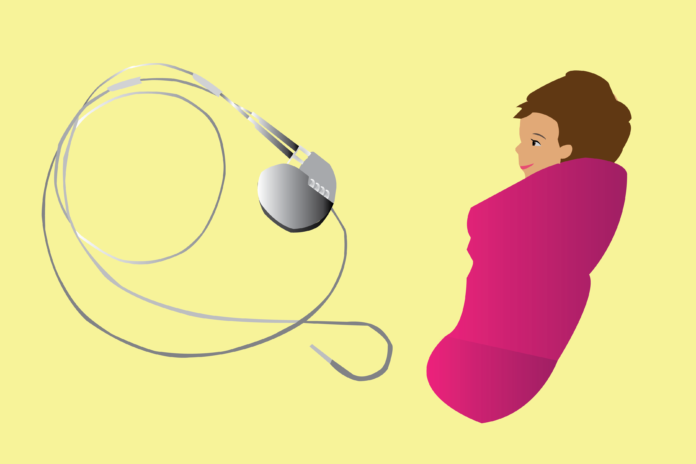The Micra is the smallest leadless pacemaker in the world to be implanted in children as young as two years old
By BRANDON NGUYEN — science@theaggie.org
Congenital complete heart block, a rare condition that disrupts rhythmic electrical conduction responsible for regular pumping of the heart, affects about one in 15,000 to 22,000 children. Owen Clark’s 10-year-old daughter Avery was affected by this condition as a result of a rare mitochondrial disorder, requiring medical attention and the implementation of a pacemaker to restore rhythmic, physiological heart pumping.
Dr. Daniel Cortez, a pediatric electrophysiologist at the UC Davis Medical Center, offered the Clarks two types of pacemakers: the traditional pacemaker and a small leadless pacemaker about the size of a battery.
“The choice was pretty straightforward,” Clark said. “We wanted the smaller one, without all of the leads and cords. It could be implanted directly into her heart without surgery.”
The small leadless pacemaker created by Medtronic, also known as the Micra, is the world’s first leadless pacemaker and was first approved by the Food and Drug Administration in 2016. According to Medtronic’s website, “Micra’s accelerometer detects mechanical atrial activity and uses this information to deliver AV [atrioventricular] synchronous ventricular pacing. [The Micra] delivers an estimated average battery longevity of 8–13 years, depending on the patient’s degree of AV block.”
Cortez made notable comparisons between the traditional pacemaker option and the Micra.
“For a super active kid, the problem with traditional pacemakers is that the wires break all the time,” Cortez said. “Even if you’re able to place it through sort of a regular adult way, which is through an incision in the chest and putting wires into the heart connecting to the battery, children still deal with issues like erosion of the skin and tissue because it’s just so big for a little kid. And the little kid is going to grow, so their wires are going to get stretched out, and they’re going to break.”
Replacing the leads or wires connected to the pacemaker right underneath the skin can be a dangerous procedure. Cortez said that lead extraction, which involves surgically opening the patient’s chest, has a risk of death, as high as one in every 100 people.
Fortunately, with the Micra, the procedure is minimally invasive, involving the threading of the small pacemaker with an IV tube through a blood vessel before eventual release inside the right ventricle of the heart.
“Recently, we had to get a little more creative, so there’s actually a handle mechanism that involves a little cup in the tube that you use to push it out, so the pacemaker sits in a little container as part of the catheter,” Cortez said. “A bending mechanism that I do with my hands three feet away from the patient holding the tubes helps push the pacemaker out. The pacemaker actually has a line, so it’s essentially like a fishing line that it’s [the Micra] still connected to after you deploy it. That’s a retrieval and so if you need to get it back, you just have to align the cup to the back of the device and then put the larger sheath over it.”
Cortez is the first physician in Northern California to insert the pacemaker through a neck vein, as most typically thread the pacemaker through a leg vein. In pediatric patients like Avery, on whom Cortez operated, the leg vein is too small for the Micra pacemaker and risks rupture of leg veins. Though the leadless pacemaker presents advantages in terms of size and its lack of cords, Cortez did provide insight into some of its current disadvantages.
“So one issue is really retrieval, where we know we might have to abandon the device and there are studies, where if you abandon the device for several years, nothing really happens, and the heart just goes around it and encapsulates it,” Cortez said. “But if it presents problems, we have to go in and open up the chest to extract the pacemaker, which is why I don’t use it all that often. The other thing is it’s hard to do physiologic pacing or the normal conduction system with the Micra compared to the traditional pacemaker with leads.”
Nonetheless, the leadless pacemaker is an alternative to traditional pacemakers, especially in the right patients who present potentially shorter life spans or serious heart conditions.
Following her procedure, Avery has been able to resume normal physical activities. The pacemaker will last her for the next 12 to 20 years before a follow-up procedure with the traditional pacemaker, depending on how often her heart requires synchronous pacing. Cortez is able to monitor pacemakers remotely to ensure they still work in between routine checkups.
“For a minimally invasive pacemaker procedure where patients can come in the same day, I put one stitch on the neck afterwards; I take that stitch out the next day; they go home and that’s the whole procedure,” Cortez said. “There’s no risk of infection here and no big incision where they don’t have to have their chest cut open. I think the Micra will help push forward the safety and ability to use these leadless pacemakers in different ways that had been traditionally thought.”
Written by: Brandon Nguyen — science@theaggie.org





